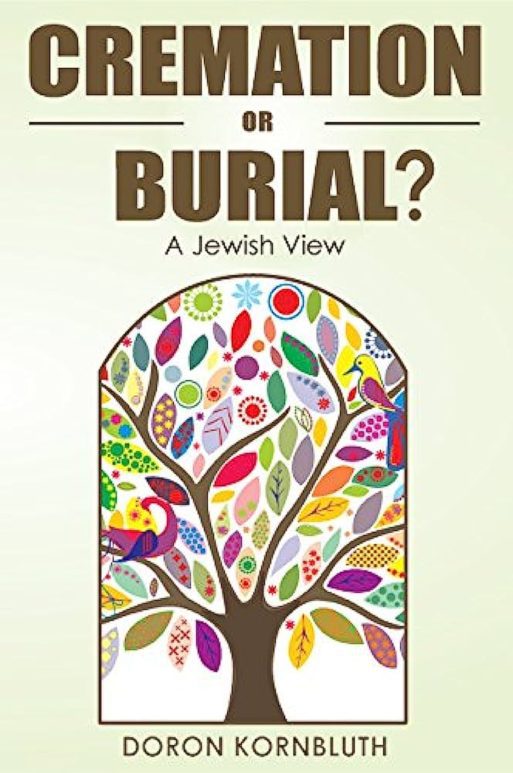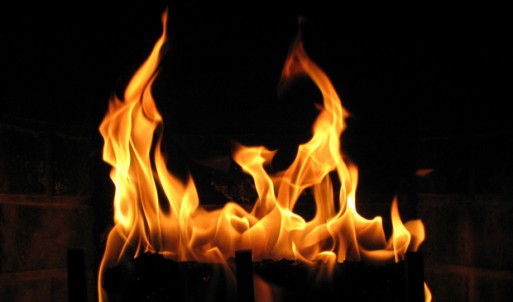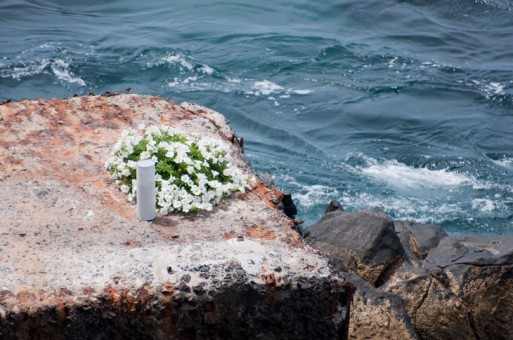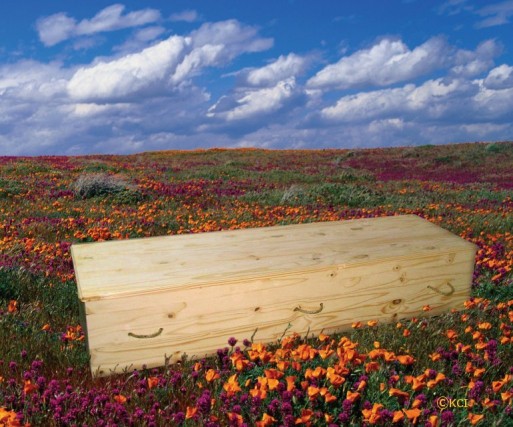 Modern society tends to prefer cremation: it is perceived as cheaper than a burial, more environmentally sound, and, well, just more hip.
Modern society tends to prefer cremation: it is perceived as cheaper than a burial, more environmentally sound, and, well, just more hip.
To the contemporary person, “the idea of scattering ashes seems a eco-friendly alternative” to burial. The idea of a body decomposing in a box seems a bit putrid compared to the quick and clean purifying by fire. And consider the fact that people don’t often live in the towns they were born in, nor are they buried in the local cemetery with generations of their family where they can be visited and honored.
Much easier to move an urn, or just scatter the ashes to the wind.
Author Doron Kornbluth compares monotheistic tradition of burial with the polytheistic practice of cremation, which declines whenever monotheism takes root. But when it weakens, as in secularized “post-Christian” cultures, cremation soars. “Cremation accounts for over 90 percent of the burial choices in Japan and India, and over 70 percent in heavily secularized Switzerland and Great Britain,” states Kornbluth. But in the “parts of the world inhabited by Jews, Muslims, and Orthodox Christians,” it’s much lower.
What accounts for this? The Abrahamic religions believe that any desecration of the body is the desecration of a being made in the image of God. And while Jewish commentators embrace this statement, they like to think it means that we are made in the image of God in “our ability to think, choose, act morally, and rise above the physical.”
“We are our bodies’ custodians, not their owners, and should not destroy something that is not ours.”
The Jewish bury damaged or worn Torah scrolls in an act that they believe signifies their end with a sense of dignity. And it is likewise that they bury the bodies of their deceased, for in the Jewish tradition the body is only a vessel for our souls, given to us by God for our time on earth.
The element of fire also signifies absolute destruction in Jewish tradition. When the ancient Hebrews built the golden calf, Moses did the harshest thing he could to eliminate it: he burned it. Sodom and Gomorrah, too, suffered from brimstone and fire when they wouldn’t change their ways.
While the commands of a wrathful God may be enough to convince a certain religious demographic against cremation, we can also find many compelling secular arguments in opposition of it.
Although the process of cremation seems somehow less repugnant than a decomposing body, a description of a Nepalese funeral cremation includes the following:
“The head was already burn t beyond recognition and the skull split open due to the internal expansion from the heat of the fire. The lower legs and feet were un-scorched, as they were protruding from the pile of burning wood… The bones were contracting and popping; the bodily organs were frying and the juices sizzling in the intense heat.”
t beyond recognition and the skull split open due to the internal expansion from the heat of the fire. The lower legs and feet were un-scorched, as they were protruding from the pile of burning wood… The bones were contracting and popping; the bodily organs were frying and the juices sizzling in the intense heat.”
And although using a closed oven instead of an open fire “seems to eliminate the disturbing sounds (and) smells,” what actually happens to the body of the deceased in the oven is never mentioned in modern cremation literature.
“The body does not calmly fade into oblivion as it is being burned.”
If this isn’t enough, everything that is left — including the casket, residue from previous bodies, bits of the oven’s firebrick and the larger bones that don’t turn to ash — is crushed into powder and presented as the remains.
Then there is “the toilet-bowl assumption.” Our society likes to put distasteful things out of sight, and with today’s innovations in health and medicine it’s easier than ever. Once flushed down the toilet, something disappears. In that sense, cremation appears the easiest way to quickly dispose of the unpleasantness of a dead body. But there is an ecological cost of cremation. Two million BTUs or about 20 gallons of fossil fuel are typically required. Then consider the diesel fuel needed to power the boat for the scattering of ashes at sea, a very popular cremation ceremony. Toxic emissions of heavy metals, and most disturbingly, mercury, are also common byproducts of the process of cremation. The EPA estimates that one cremated body emits the same amount of dioxins as the burning of 3,200 pounds of tires, 320 pounds of trash, or 426 pounds of hazardous waste in a hazardous waste incinerator. Add the carbon footprint and the pollution produced by the ceremonies we hold for ourselves with the scattering of the ashes (by boat or plane, remains have even been sent out to space) and the environmental cost of cremation is significant.
There is also the question of who the end-of-life service, whether burial or cremation, is for. Many see it as a ceremony to give a sense of closure for the living. The soul of the deceased is often considered to have moved on to a “better place” and what happens to the body will not concern them. However, according to the Jewish view, “Since they are partners, the soul becomes attached to its body. When death occurs, the soul does not depart immediately…. The soul, then, does not abandon the body immediately after death. It hovers around the body until burial, and shares in the mourning during shiva (seven day period of mourning). The Talmud explains that “while mourning practices are largely for the mourners, burial itself is not for the living — it is for the dead, enabling the soul to slowly disengage from its body.”
Even if one doesn’t believe in the traditional Jewish concept of body and soul, one has to consider the non-religious, environmental price of cremation. Only the modern mourner can shoot dad’s ashes into space and then ingest the ceremony’s rocket fuel residue — which can then be found in everything from arctic seal fat, to bottled water. And so the circle of life takes another modern twist.
After reading the book, I decided I don’t want to be cremated. I’ll let the worms enjoy my remains — smaller carbon footprint and less toxic emissions. And how can we be sure if the soul has really departed the body for good?
Learn more about the cremation process here.

 “Cremation or Burial? A Jewish View” by Doron Kornbluth
“Cremation or Burial? A Jewish View” by Doron Kornbluth




 Having an Estate Plan Is Essential – So Is Discussing It With Your Children
Having an Estate Plan Is Essential – So Is Discussing It With Your Children
 The Healing Sound of Singing Bowls
The Healing Sound of Singing Bowls
 “Summons” by Aurora Levins Morales
“Summons” by Aurora Levins Morales














